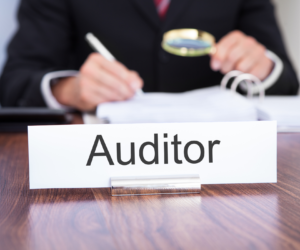

17 Dec Guide to Flooring Slip Rating & Slip Testing Sydney & NSW
When buying a new set of flooring, you may notice that it often comes with a rating attached to it. These ratings designate the floor’s slip rating and slip testing, letting you know just how safe these floors are and how much slip resistance they offer. But what do all of these different ratings mean? And how do you read or interpret them properly?
In today’s FloorVenue guide, we’ll walk you through everything you need to know about flooring slip ratings. You’ll learn how to read them independently and improve your floor-shopping abilities.
What is a Flooring Slip Rating?
Slip ratings are given to floors to help consumers know just how slippery the floor will be under certain conditions. This can be useful for both professional and residential purposes. Many commercial applications have strict standards whereby the floor must achieve specific slip ratings (to be explored in depth in this article).
If you’re renovating your flooring for a busy business, such as a restaurant kitchen, you want your cooks to be able to run around with confidence knowing that they won’t slip and fall.
Conversely, slip ratings are also useful for homeowners looking to renovate. If you live with kids who like to run around or seniors walking about, flooring slip ratings will help you select a floor that will keep your loved ones safe as they play or walk around the house.
You may also want to choose different floors with different flooring slip ratings based on where you plan to install your new flooring. Bathrooms and kitchens typically benefit from different floors compared to dining rooms or living rooms.


How are Flooring Slip Ratings Calculated?
In Australia, all flooring slip ratings are made under the guidelines provided by the AS 4586-2013 rules. In layman’s terms, these are simply the basic Australian standards that measure different surface materials under various conditions to see how much slip resistance they offer, even under the slipperiest of standards.
These slip resistance tests will have various flooring surfaces placed under various conditions to see how well they fare. This can include an inclined ramp test, an oil ramp test, tests that deal with wet barefoot conditions and other criteria related to risk, friction, different kinds of environments and more.
The reason all these different tests exist is to be as scientific and comprehensive as possible. The pendulum test, ramp test and oil-wet ramp test need to take into account the fact that flooring can be installed in a variety of applications whether a kitchen, hospital, shopfront, outdoor or residential to mention few.
This means that one floor may perform well under some circumstances but do worse under others. These are the kinds of rigorous Australian standards that allow flooring buyers to be guaranteed safety.


What are the Different Flooring Slip Ratings?
There are four different categories of flooring slip ratings. Each one has different numbers attached to it to let you know exactly how well it fared, but first let’s begin with the letters of the ratings.
Wet Pendulum Slip Rating Test (P)
A wet pendulum slip rating test is done to test a floor’s ability to retain friction after it has been covered with water. This is the most basic of the slip rating tests as spilled water is, under most circumstances, the most common material to cover a floor.
As the name implies, a pendulum machine is placed on a flat surface and is used to test the friction of the material that the pendulum slides across. It is meant to simulate walking on a floor, wet or dry, and is a top safety testing practice in Australia. The more slippery the surface, the more the pendulum will swing upwards after being released.
Wet pendulum slip ratings are always accompanied by the letter ‘P’.
Dry Floor Friction Slip Rating Test (D)
A dry floor friction test rates a flooring surface’s ability to retain friction under dry circumstances. This is an important test for flooring that isn’t going to be prone to much wetness at all.
These tests calculate what’s called a coefficient of friction, which is just a fancy scientific way of describing whether the floor has adequate or insufficient friction for internal installation purposes.
Dry floor friction slip rating tests receive the letter ‘D’.
Wet Barefoot Ramp Slip Rating Test (A, B and C)
The wet barefoot ramp slip tests are probably going to be the most relevant to homeowners rather than business owners. While these tests can apply to bathroom floors, they also test the slip resistance of areas near swimming pools.
As you might expect, these slip tests measure the slip resistance of surfaces while wet and when walkers are barefoot.
These tests are accompanied by ratings with the letters ‘A’, ‘B’ or ‘C’.
Oil Wet Ramp Slip Rating Test (R)
The fourth and final slip rating test deals with oil on wet ramps. These are important and common tests conducted in large restaurant kitchen areas or working places that are prone to oil spills.
Like the previous category, these safety tests are done on ramps and inclined surfaces. As a result, there are more than usual possible ratings, each one associated with the highest possible incline slip the test passes.
Oil wet ramp slip rating tests are given the letter ‘R’.


The Numbered Ratings of Slip Rating Tests
As mentioned earlier, each of the letters assigned to each of the four main slip rating tests will also have numbers next to them. The letter designates what kind of test was conducted, whereas the number indicates how well the floor performed. The number can therefore be treated as a type of grade or final score.
For wet pendulum slip rating tests, they can be graded as P0, P1, P2, P3, P4 and P5. Each of these six grades are the final slip resistance rating.
The slip resistance improves as the number increases. This means that P0 has the worst slip resistance, whereas P5 has the best.
For dry floor friction slip ratings, there are only two grades: D0 and D1. Unlike the previous category, the lower number is better and has a more desirable coefficient of friction score.
For wet barefoot ramp slip tests, the grades go from A, B and C. A has a high slip risk, B is medium and C has the best slip resistance of all three.
Finally, oil-wet ramp slip ratings go from R9, R10, R11, R12 and R13. Like with wet pendulum slip ratings, the higher number is better, but in this case the numbers refer to incline slope degrees. A rating of R9 only handles slips up to 10 degrees, but a rating of R13 can handle 35 degrees or more.
Which Flooring Slip Ratings should I buy?
You might think that you need to have flooring that has the best slip ratings no matter what, but this is often overkill. The highest slip ratings are only necessary for certain environments, like crowded line cook kitchens or near public outdoor swimming pools. If you’re just a homeowner, many ratings that aren’t the highest grade will suit you just fine.
However, if you are the owner of a commercial-use building, you must comply to the National Construction Code (previously known as Building Code of Australia) and Australian Standards by laying a floor covering with suitable slip resistance.
Hybrid flooring is a waterproof floor covering that often achieves P2 or above, making them suitable for most residential and light commercial applications.
The most slip-resistant floor coverings will be vinyl planks or safety vinyl sheets.
If you want more info on how to shop for the best flooring slip ratings, contact us at FloorVenue any time so we can match you with the most appropriate slip rating possible.




























